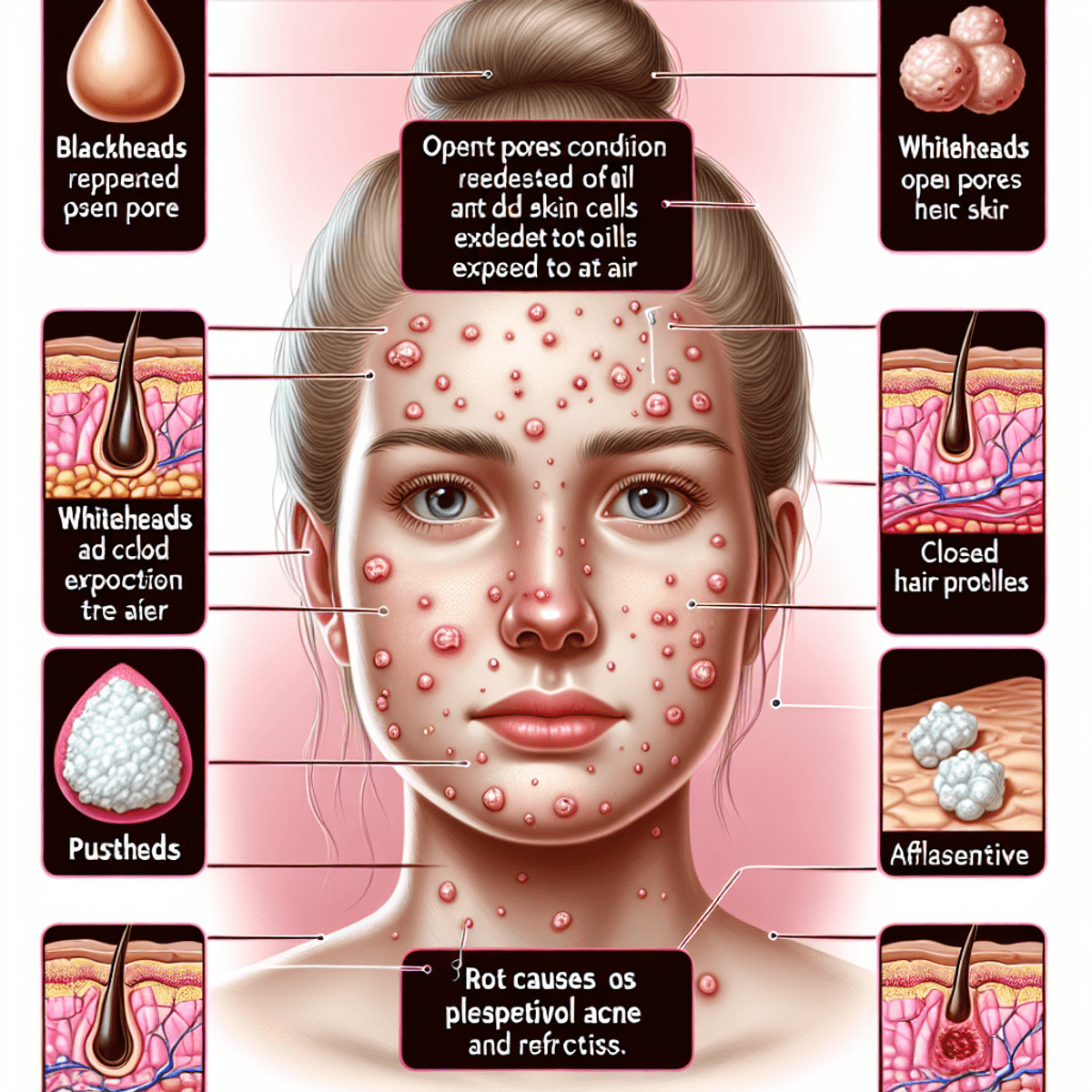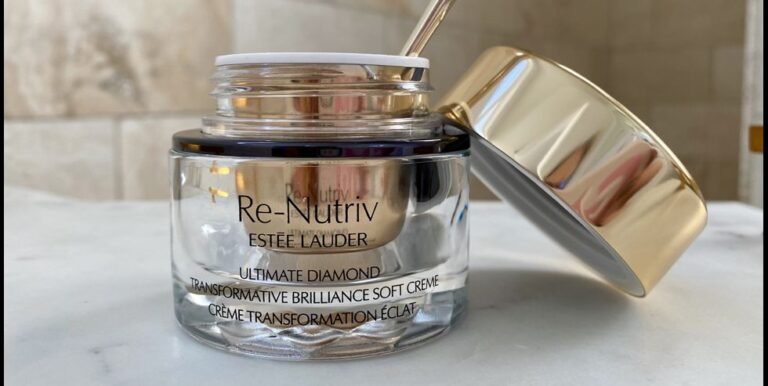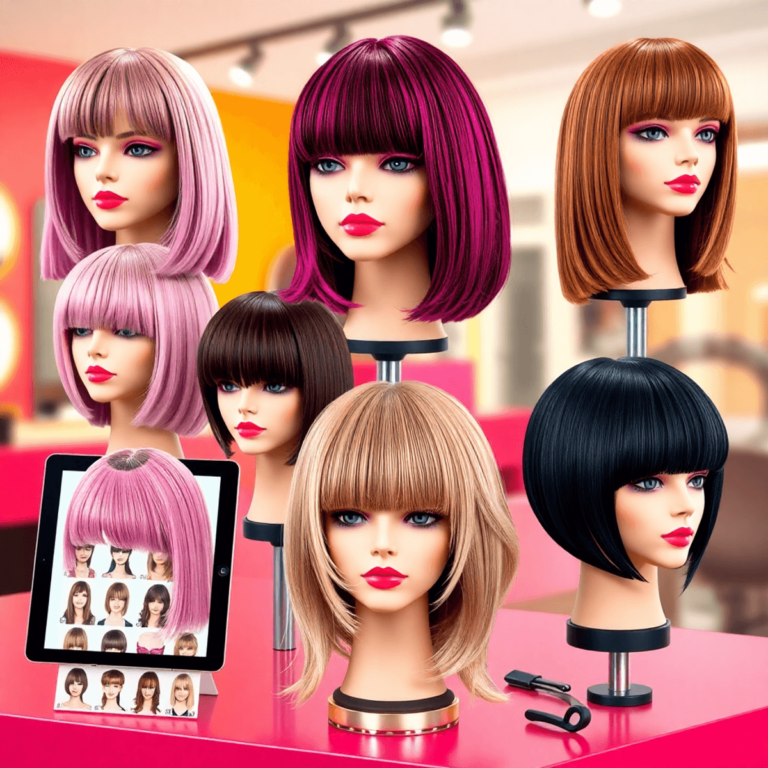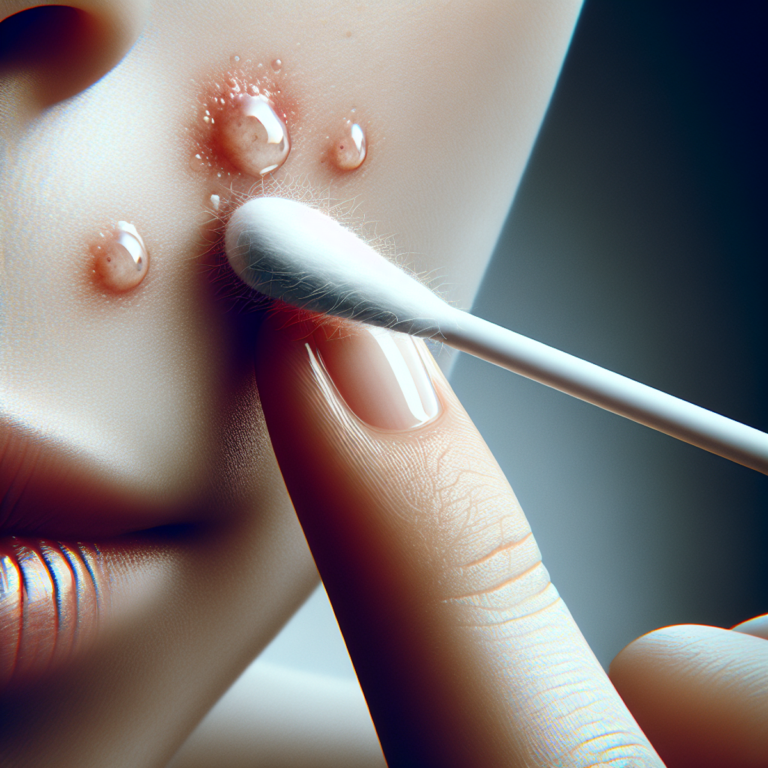How to Get Rid of Your Acne, Quickly and Effectively

Introduction
Acne is a common skin condition characterized by clogged pores due to dead skin cells and excess oil. These blockages can lead to various forms of acne, including blackheads, whiteheads, pustules, and cysts. Understanding how to get rid of your acne quickly and effectively is essential for maintaining healthy skin and boosting confidence.
Acne affects individuals across different age groups:
- Teenagers: Hormonal changes during puberty often trigger increased oil production, leading to acne.
- Adults: Hormonal fluctuations related to menstrual cycles, pregnancy, or stress can cause breakouts.
- Older Adults: Acne can persist or even start in adulthood due to various factors including lifestyle and hormonal changes.
Addressing acne quickly and effectively is crucial:
- Immediate Relief: Reducing inflammation and preventing scars.
- Long-term Skin Health: Preventing future breakouts and maintaining clear skin.
By exploring effective treatments and preventive measures, you can learn how to remove pimples overnight or even discover how to remove pimples naturally and permanently. This guide offers comprehensive methods tailored to different needs and skin types.
Understanding the Different Types and Causes of Acne
Types of Acne
Acne shows up in different ways, each with its own look. Knowing these can help you find the best treatment:
- Blackheads: These are open pores that look like small black spots. They’re caused by blocked hair follicles filled with too much oil and dead skin cells exposed to air.
- Whiteheads: These are closed pores that appear as small white bumps on the skin. Unlike blackheads, they’re not exposed to air, so they stay flesh-colored or white.
- Pustules: These are red pimples with pus inside. They show up as red bumps with a white or yellow center and can be painful.
- Cysts: These are large, painful lumps under the skin filled with pus. Cystic acne is often more severe and can cause scars if not treated properly.
Primary Causes of Acne
Several factors contribute to acne development. Knowing these causes helps you tackle the root problem rather than just treating the symptoms:
- Hormonal Changes: Fluctuations in hormone levels, especially androgens, increase oil production in the skin. This is common during puberty, menstruation, pregnancy, and menopause.
- Excess Oil Production: Sebaceous glands produce sebum, an oily substance that lubricates the skin. Excessive sebum can clog pores and lead to acne formation.
- Skin Bacteria: Propionibacterium acnes (P. acnes) is a bacterium naturally present on the skin. When pores are clogged, this bacterium multiplies, causing inflammation and pimples.
Lifestyle Factors Impacting Acne
Lifestyle choices significantly affect your skin’s health. Here are some factors that can exacerbate acne:
1. Diet
- High glycemic index foods (e.g., sugary snacks, white bread) can spike insulin levels, leading to increased sebum production.
- Dairy products have been linked to hormonal changes that may trigger acne in some individuals.
2. Stress Levels
- Stress triggers cortisol release, which can increase oil production and inflammation.
- Lack of sleep associated with stress can hinder skin repair processes.
3. Skincare Routine
- Using products that clog pores or irritate the skin can worsen acne.
- Inconsistent skincare habits may fail to address underlying issues effectively.
Recognizing the different types of acne and their primary causes allows you to adopt targeted treatments tailored to your specific needs. By understanding how lifestyle factors influence your skin condition, you can make informed decisions to reduce breakouts effectively.
Quick and Effective Methods to Get Rid of Acne Fast
1. Topical Treatments
Topical treatments for acne are among the most popular solutions due to their accessibility and effectiveness. These treatments work by targeting the root causes of acne, such as bacteria, excess oil production, and clogged pores.
Benzoyl Peroxide: Mechanism and Usage Tips
Benzoyl peroxide is a powerful ingredient widely used in acne treatments. It works by:
- Killing bacteria: Specifically targets Propionibacterium acnes, the bacteria responsible for inflamed pimples.
- Reducing oil production: Helps control excess sebum that can clog pores.
Usage Tips:
- Start with a lower concentration (2.5%) to minimize skin irritation.
- Apply a thin layer to affected areas once or twice daily.
- Use sunscreen, as benzoyl peroxide can increase skin sensitivity to sunlight.
Salicylic Acid: Exfoliation and Pore Unclogging Benefits
Salicylic acid is another common ingredient in acne treatments known for its exfoliating properties. Its benefits include:
- Exfoliation: Removes dead skin cells from the surface, preventing clogged pores.
- Pore penetration: Penetrates deep into the pores to dissolve debris and reduce blockages.
Usage Tips:
- Look for products with 0.5% to 2% salicylic acid.
- Apply after cleansing your face, focusing on areas prone to breakouts.
- Gradually introduce it into your routine to avoid irritation.
Tea Tree Oil: Natural Remedy with Antibacterial Properties
Tea tree oil is a natural alternative known for its antibacterial and anti-inflammatory properties. It offers several benefits:
- Antibacterial action: Targets bacteria on the skin’s surface, helping reduce inflammation.
- Anti-inflammatory effects: Calms redness and swelling associated with pimples.
Usage Tips:
- Dilute tea tree oil with a carrier oil (e.g., jojoba or coconut oil) before applying to the skin.
- Perform a patch test to ensure no allergic reaction occurs.
- Apply directly to pimples using a cotton swab once or twice daily.
These topical treatments provide various options depending on your skin type and severity of acne. By understanding how each ingredient works, you can choose the most effective method for your needs.
2. Physical Treatments
When topical treatments for acne don’t deliver immediate results, physical treatments can offer a quick fix for acne. These methods are especially useful when you need to get rid of pimples overnight or address sudden breakouts.
Ice Application for Acne
Applying ice directly to inflamed pimples can bring rapid relief:
- Reduces Swelling: Ice constricts blood vessels, reducing the redness and swelling associated with pimples.
- Pain Relief: It provides a numbing effect, relieving pain and discomfort caused by inflamed breakouts.
To use this method, wrap an ice cube in a clean cloth and apply it to the affected area for about 1-2 minutes. Repeat this process several times throughout the day. This simple technique can be particularly effective if you’re wondering how to get rid of pimples on your face quickly.
Cortisone Injections for Acne
For more severe cases, cortisone injections administered by a dermatologist are an option:
- Quick Reduction of Inflammation: Cortisone rapidly decreases inflammation and reduces the size of cystic acne within 24-48 hours.
- When to Consider: If you have an important event coming up and need a fast solution, cortisone injections are worth considering. They are especially useful for large, painful cysts that don’t respond well to other treatments.
Consult your dermatologist to determine if this treatment is suitable for your skin condition. Unlike topical treatments like benzoyl peroxide or salicylic acid, cortisone injections provide targeted relief with almost immediate effects.
3. Over-the-Counter Options
When it comes to quick fixes for acne, over-the-counter (OTC) options can be quite effective. These treatments are easily accessible and can provide noticeable improvements in a short amount of time.
Spot Treatments
Spot treatments containing active ingredients like salicylic acid or benzoyl peroxide are popular choices for those wondering how to get rid of pimples overnight. These products target specific areas where breakouts occur, delivering powerful ingredients directly to the affected spots.
- Salicylic Acid: This beta hydroxy acid (BHA) works by exfoliating the skin and unclogging pores, making it ideal for treating blackheads and whiteheads.
- Benzoyl Peroxide: Known for its antibacterial properties, benzoyl peroxide kills acne-causing bacteria and reduces inflammation. It is available in various concentrations ranging from 2.5% to 10%.
Pimple Patches
Another innovative OTC option is pimple patches. These small, adhesive patches are applied directly onto pimples and work by absorbing excess oil and pus while protecting the area from external irritants.
- Usage: Simply clean the affected area, apply the patch, and leave it on for several hours or overnight.
- Effectiveness: Pimple patches often contain hydrocolloid material that helps speed up the healing process and reduce redness, making them a convenient choice for those looking to quickly eliminate acne breakouts.
Both spot treatments and pimple patches offer practical solutions for managing acne without needing a prescription. They can be an excellent addition to your skincare routine when figuring out how to get rid of pimples on your face effectively.
By incorporating these over-the-counter options into your regimen, you can address breakouts swiftly and maintain clearer skin.
Good Skincare Practices to Prevent Future Breakouts
Developing a consistent skincare routine for acne prevention is crucial. Regularly maintaining your skin can significantly reduce the chances of new breakouts forming. Here are some essential practices to incorporate into your daily regimen:
1. Cleansing
Choose a gentle, non-comedogenic cleanser to remove dirt, oil, and makeup without stripping your skin of its natural moisture. Cleansing twice a day is generally recommended.
2. Exfoliating
Incorporate a mild exfoliant once or twice a week to remove dead skin cells and prevent clogged pores. Products containing alpha hydroxy acids (AHAs) or beta hydroxy acids (BHAs) can be particularly effective.
3. Moisturizing
Even oily or acne-prone skin needs hydration. Opt for a lightweight, non-comedogenic moisturizer that won’t clog pores but will maintain your skin’s moisture barrier.
Choosing Non-Comedogenic Makeup Products
Makeup products can sometimes contribute to acne if they contain pore-clogging ingredients. Selecting non-comedogenic makeup products ensures that your skin can breathe while still allowing you to enhance your appearance.
- Foundation: Look for foundations labeled as “non-comedogenic” or “oil-free.” Mineral-based foundations are often a good choice as they are less likely to cause breakouts.
- Concealers: Choose concealers with similar properties—non-comedogenic, oil-free, and ideally with added skincare benefits like salicylic acid to help treat blemishes while covering them up.
- Powders: Finishing powders can help control shine but ensure they do not contain talc or other pore-clogging ingredients.
Additional Tips
- Avoid touching your face: Hands can transfer bacteria and oils to your face, exacerbating acne.
- Clean makeup tools regularly: Brushes and sponges should be cleaned frequently to remove accumulated product and bacteria.
- Change pillowcases often: Clean pillowcases reduce the transfer of oil and bacteria from fabric to skin during sleep.
By following these good skincare practices, you’ll create an environment where your skin is less likely to develop new breakouts. This proactive approach complements the methods discussed in earlier sections on how to get rid of your acne quickly and effectively.
Exploring Additional Methods to Reduce Acne Further
Blue Light Therapy: Reducing Inflammation
Blue light therapy for acne is an innovative method gaining popularity for its effectiveness in treating active breakouts. This non-invasive treatment utilizes blue light wavelengths to target and kill acne-causing bacteria (Propionibacterium acnes) on the skin. By reducing bacterial presence, inflammation associated with acne decreases significantly.
How it Works
The blue light penetrates the skin’s surface and generates reactive oxygen species that eradicate bacteria. This process helps in diminishing inflammatory acne lesions.
Treatment Frequency
Sessions typically last around 15-20 minutes and may require multiple treatments per week for optimal results.
Safety and Side Effects
Blue light therapy is generally safe with minimal side effects such as temporary redness or dryness. It’s suitable for most skin types but should be administered or supervised by a professional for best outcomes.
Face Masks Containing Sulfur
Face masks with sulfur are another effective method for managing acne-prone skin. Sulfur has anti-inflammatory and antibacterial properties, making it ideal for calming and clearing blemishes.
Benefits of Sulfur
- Antibacterial Properties: Sulfur aids in reducing bacteria on the skin, preventing new breakouts.
- Oil Control: It helps absorb excess oil, keeping pores clear from blockages.
- Exfoliation: Gently exfoliates dead skin cells, promoting a smoother complexion.
Usage Tips
- Apply sulfur masks once or twice a week depending on your skin type and sensitivity.
- Leave the mask on for the recommended time (usually 10-15 minutes) before rinsing thoroughly.
- Follow up with a moisturizer to prevent dryness.
Other Beneficial Ingredients
In addition to sulfur, other ingredients can enhance the effectiveness of face masks:
- Clay (Kaolin or Bentonite): Helps absorb impurities and excess oil.
- Charcoal: Known for its deep-cleansing properties, ideal for detoxifying the pores.
- Aloe Vera: Provides soothing and hydrating benefits, reducing redness and irritation.
Incorporating these additional methods into your skincare routine can provide substantial improvements in managing acne. Each treatment offers unique benefits that work together to reduce inflammation, clear existing breakouts, and prevent future ones.
When to Seek Professional Help from a Dermatologist
Knowing when to see a dermatologist can make a big difference in managing stubborn or severe acne. Here are some signs that you might need professional help:
- Persistent Acne: If over-the-counter treatments and good skincare practices fail to show improvement after several weeks.
- Severe Breakouts: Instances where acne is painful, widespread, or results in deep cysts and nodules.
- Scarring: If you notice acne leading to permanent scars, early intervention can prevent further damage.
- Psychological Impact: Cases where acne is affecting your self-esteem or mental health.
Prescription Medications for Severe Cases
Dermatologists have access to a variety of prescription medications that can effectively target severe acne. These include:
- Topical Retinoids: These vitamin A derivatives (e.g., tretinoin, adapalene) promote cell turnover and prevent clogged pores. They are often prescribed for patients with persistent blackheads and whiteheads.
“Topical retinoids not only help clear existing acne but also prevent new lesions from forming,” explains Dr. Smith, a board-certified dermatologist.
- Oral Antibiotics: For moderate to severe inflammatory acne, oral antibiotics like doxycycline or minocycline can reduce bacteria and inflammation.
“Oral antibiotics should be used in combination with topical treatments to avoid antibiotic resistance,” advises Dr. Jones from Skin Health Institute.
- Hormonal Treatments: For women, hormonal therapies such as birth control pills or spironolactone can address acne linked to hormonal fluctuations.
“Hormonal treatments are particularly effective for adult women experiencing cyclical breakouts,” notes Dr. Lee, a specialist in dermatology.
Seeking professional help ensures a tailored treatment plan that addresses your specific skin needs. This approach not only provides faster relief but also helps maintain long-term skin health by preventing future breakouts and minimizing scarring risks.
Conclusion
Taking quick and effective action is essential when dealing with acne. The methods discussed in this article—from topical treatments to physical interventions—provide various options for tackling breakouts head-on. Patience is equally important; give your skin the time it needs to respond to these treatments.
Maintaining overall skin health goes beyond addressing immediate concerns. A balanced lifestyle plays a crucial role in preventing future breakouts. This means:
- Adopting a consistent skincare routine: Regular cleansing, exfoliating, and moisturizing can keep your skin in optimal condition.
- Choosing non-comedogenic products: These products won’t clog your pores, reducing the likelihood of new pimples forming.
Implementing these practices consistently offers lasting solutions for acne while promoting a healthier complexion. By staying committed to these steps, you can achieve and maintain clear skin effectively.
FAQs (Frequently Asked Questions)
What is acne and why is it important to address it quickly?
Acne is a common skin condition characterized by clogged pores, leading to various forms such as blackheads, whiteheads, pustules, and cysts. Addressing acne quickly is crucial to prevent scarring and emotional distress, as it affects individuals across different age groups.
What are the main causes of acne?
The primary causes of acne include hormonal changes, excess oil production, and the presence of skin bacteria. Additionally, lifestyle factors such as diet and stress levels can significantly contribute to the development of acne.
What topical treatments are effective for getting rid of acne?
Popular topical treatments include Benzoyl Peroxide, which helps kill bacteria and reduce inflammation; Salicylic Acid, known for its exfoliation properties that unclog pores; and Tea Tree Oil, a natural remedy with antibacterial effects. Each treatment has its own mechanism of action and usage tips.
When should I consider physical treatments for acne?
Physical treatments like ice application can be beneficial for reducing swelling and pain associated with breakouts. Cortisone injections may also be considered for more severe cases when immediate relief is needed. It’s best to consult with a dermatologist for advice on these options.
How can I prevent future breakouts?
Maintaining a consistent skincare routine is essential in preventing new breakouts. This includes using non-comedogenic makeup products that do not clog pores. Regular cleansing and moisturizing tailored to your skin type can also help maintain clear skin.
When should I seek professional help from a dermatologist?
You should consider consulting a dermatologist if you experience stubborn or severe cases of acne that do not respond to over-the-counter treatments. Signs indicating the need for professional intervention include persistent breakouts or significant scarring. Dermatologists may recommend prescription medications like topical retinoids or oral antibiotics.










